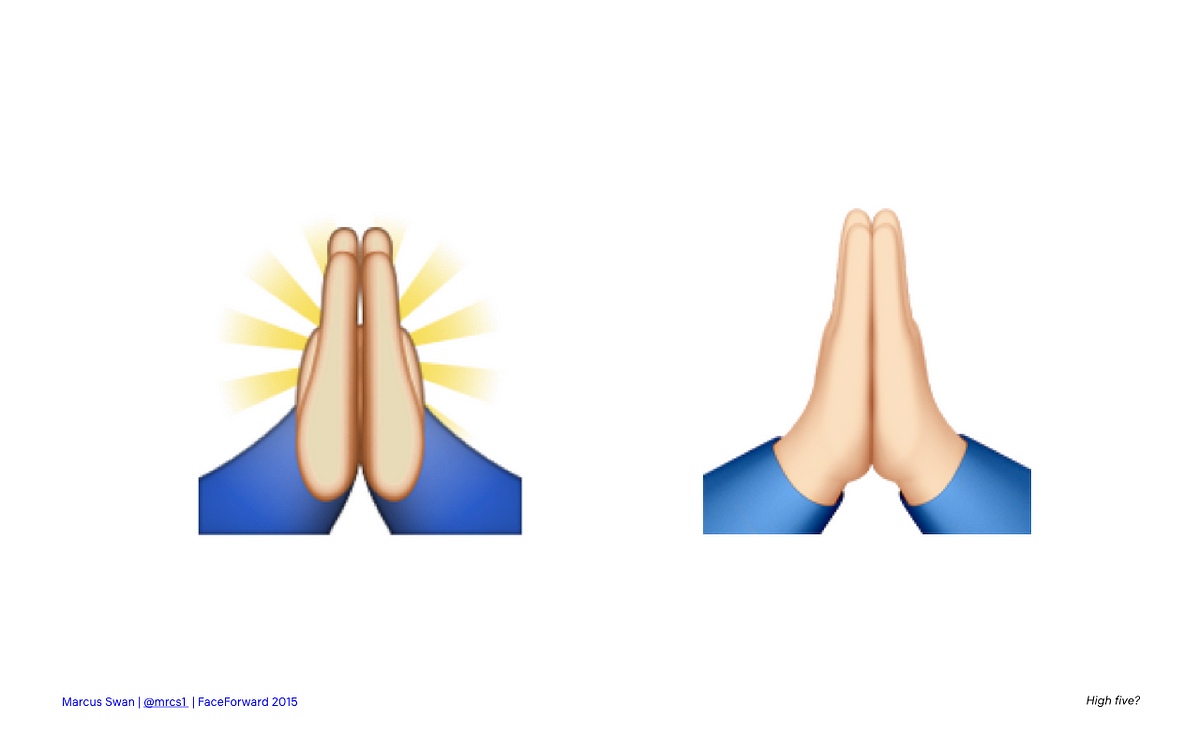Emoji: The World’s First Global Language
Unfortunately, limitations and censorship go hand in hand with all forms of communication. This has already begun to affect emoji. In 2015, Instagram allowed users to tag and search posts by emoji, but they quickly banned searches of the aubergine emoji, ?, because as a cultural marker it was used as a replacement for a penis. Instagram’s somewhat puritanical stance is questionable, though, when you consider that users can still search by gun, knife, pills, skulls, bomb, and cigarette: ??????. ?.
One of the driving factors in the ascendance of emoji culture dates back to 2011 when Apple added an emoji keyboard to its iPhone operating system, iOS 5. It was originally intended only for the Japanese market, but, once users in other countries found they could add the keyboard via a work-around in the OS, Apple officially added it for everyone. Angela Guzman, an intern at Apple in 2008, describes how she designed the ubiquitous icons
The popularity of emoji is such that even outside the original meanings associated with particular symbols from Japanese society, they’re universally understood — or at the very least, they more easily convey an approximation of what the sender and receiver mutually understand.


For example, is this a high-five, or hands in prayer? Originally, it was the latter; but in more recent Unicode releases it’s been updated to “hands pressed together.” The design itself has also been updated to reflect this change, losing the rays of beatified light and styling the hands to be more closely pressed together. If it is sent in a message within the right context, however, the meaning is open enough to be correct either way. This is part of the beauty of emoji as a representation of both thought and language.
An Emoji Explosion ??
Recently, we’ve witnessed an explosion of emoji — both in messaging and in the real world. As these ideograms and symbols become more widespread and understood, they’ve been subverted, assimilated, and re-calibrated within mainstream culture.
If you’re not quite sure where to get started with emoji, or what particular characters mean, you can head to Emojipedia, a glossary of emoji across multiple platforms. Emojitracker.com gives you real-time data on the type and number of emoji used on Twitter. If you’re feeling self-reflective, you can submit yourself to some Emojinalysis, where the analyst proposes: “you show me your recently used emojis. I tell you what’s wrong with your life.”
Where real, high-definition information is being transmitted — as in a cogent sentence, or a President’s speech — the emoji falls flat on its shiny yellow face.
Emoji have also evolved to become typographic characters in themselves. Movie plots and song lyrics are sometimes “acted” out, line by line, with emoji. The challenge is in trying to substitute larger complex themes, ideas, and words into combinations of emoji to create readable sentences. The classic Herman Melville novel Moby Dick was reimagined in emoji (through the use of crowd-sourcing). The print and production of Emoji Dick, or ?,was also crowd-funded. While I applaud the effort, I’m not sure one can improve upon Melville’s iconic opening line, “Call me Ishmael,” by reducing it any further. The book was entered into the Library of Congress in 2013.


Other attempts to use emoji as the main vehicle for longer-form texts include the translation of President Barack Obama’s 2015 State of the Union into emoji-first sentences. This seems fun on the surface, but it’s ultimately difficult to understand. Because of the lack of “vocabulary” in the emoji set, individual symbols are used for many different meanings, causing a cognitive problem that individual letters grouped into words avoid.
My own personal opinion on the continued use and evolution of emoji? They work best in a narrow band at either end of the communication spectrum: as short, punctuating but impactful signifiers, where space and time are at a premium, or abstracted out and used as a form of collage or in-your-face decoration. In the middle ground, where real, high-definition information is being transmitted — as in a cogent sentence, or a President’s speech — the emoji falls flat on its shiny yellow face.
